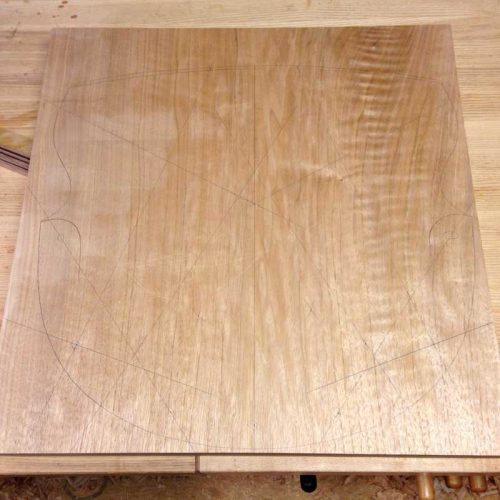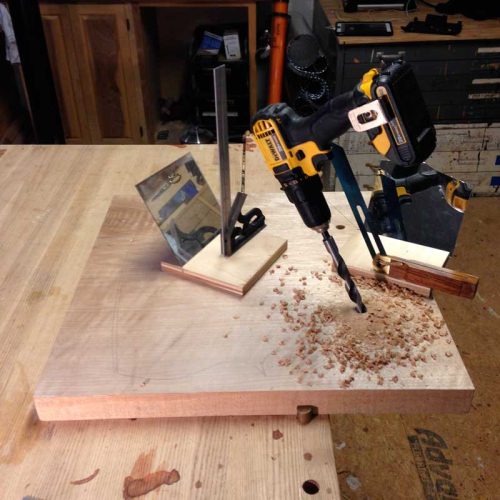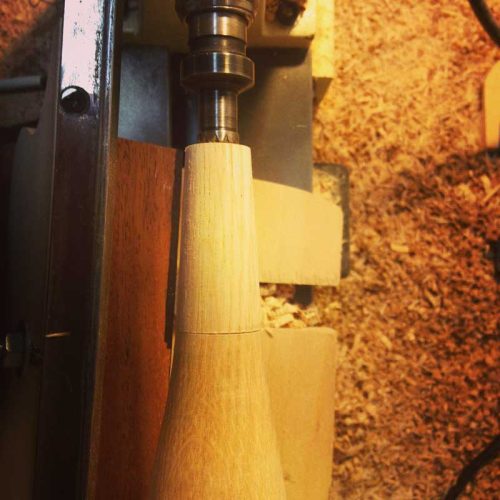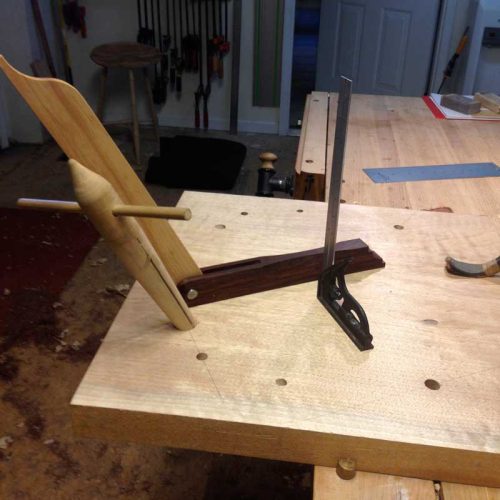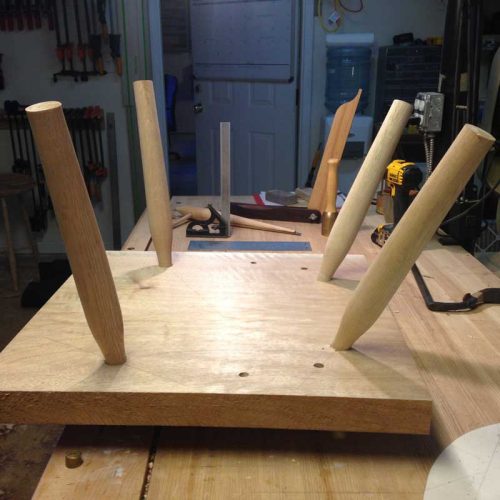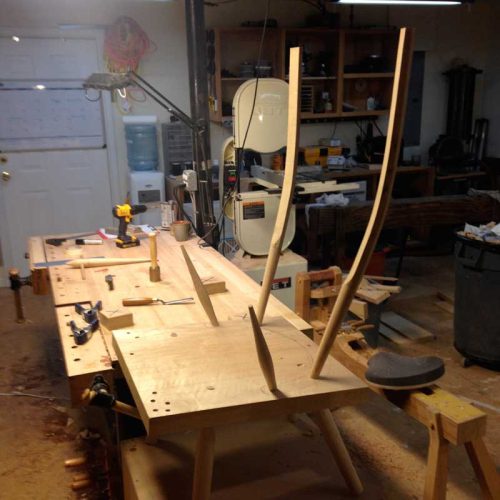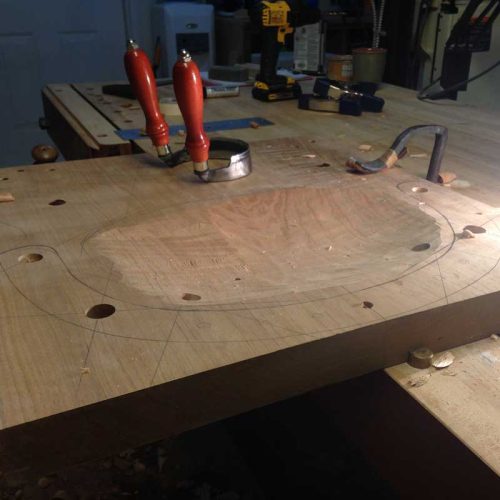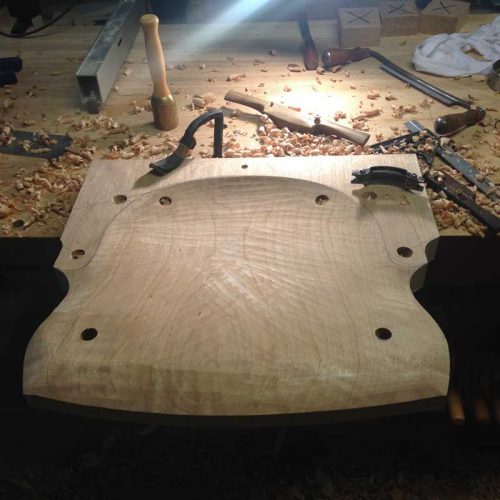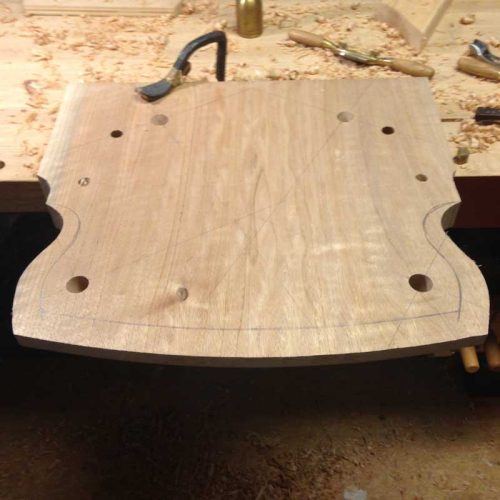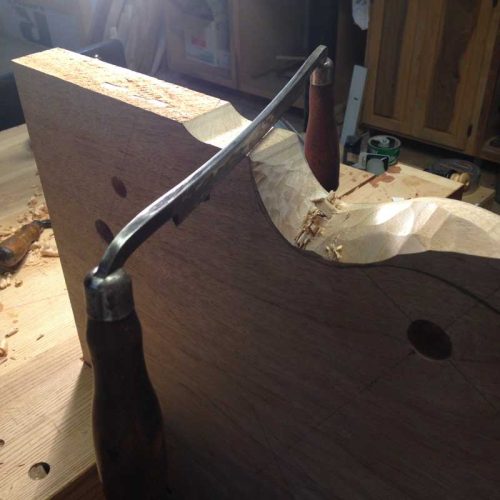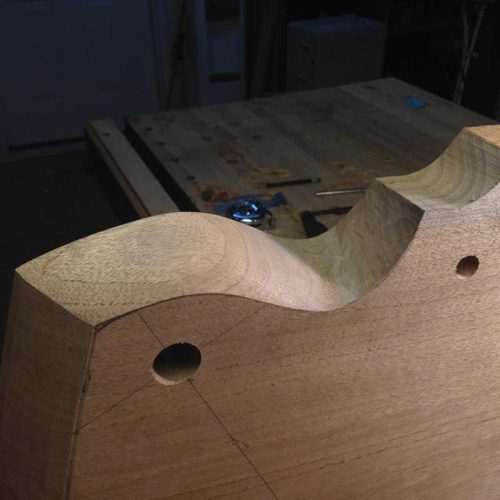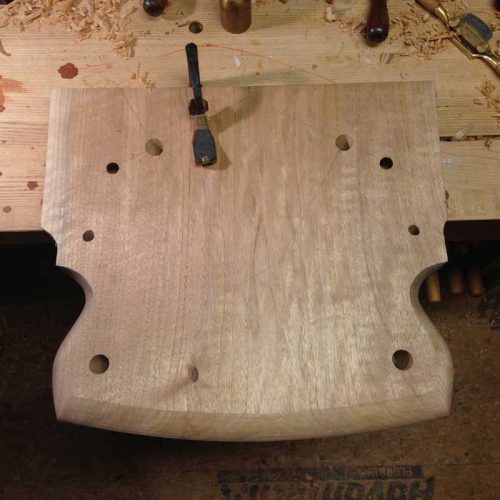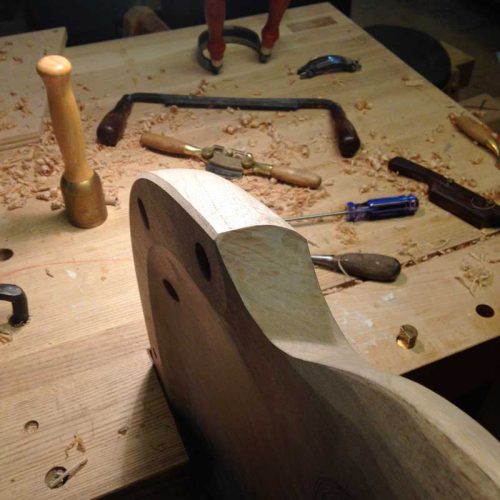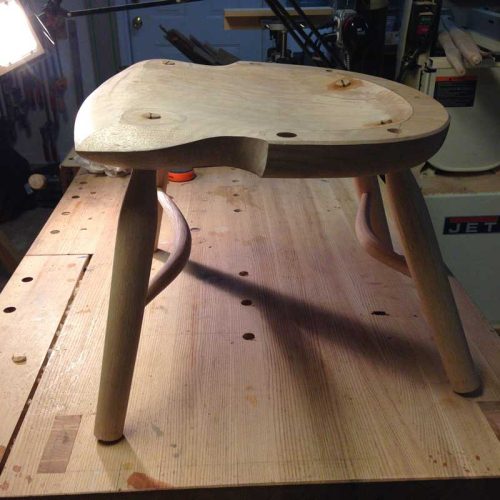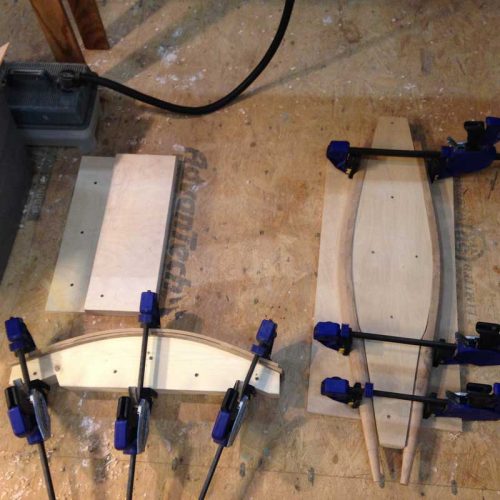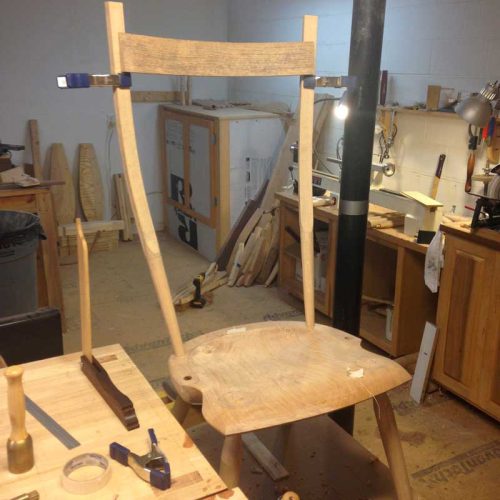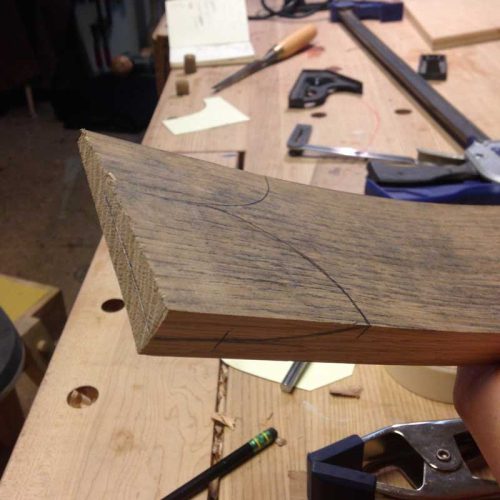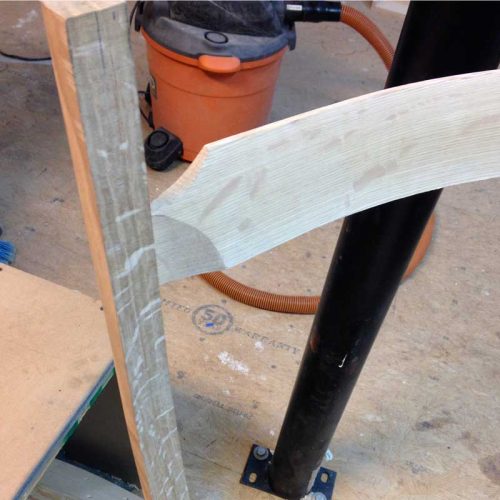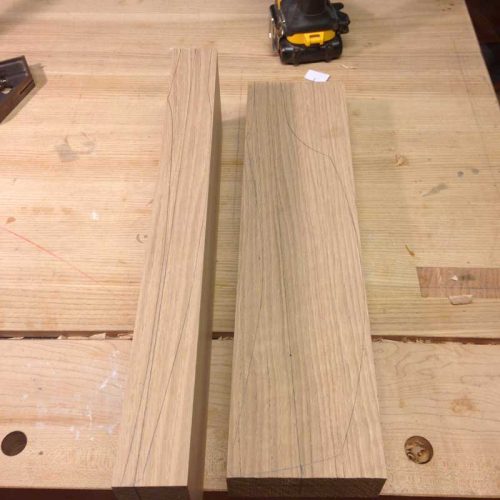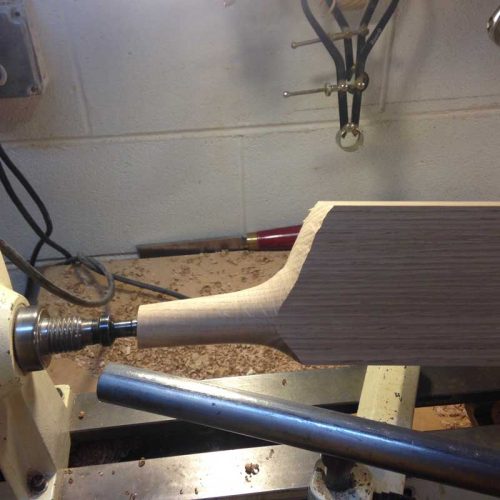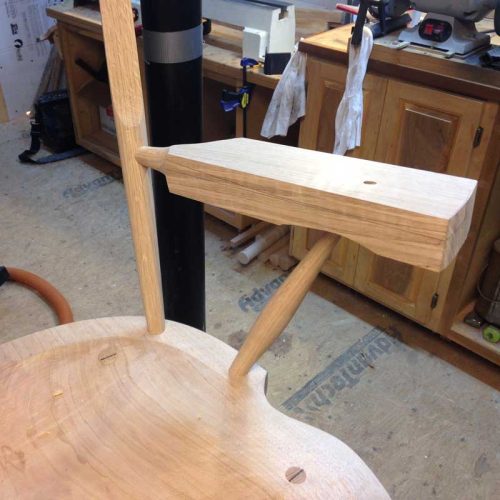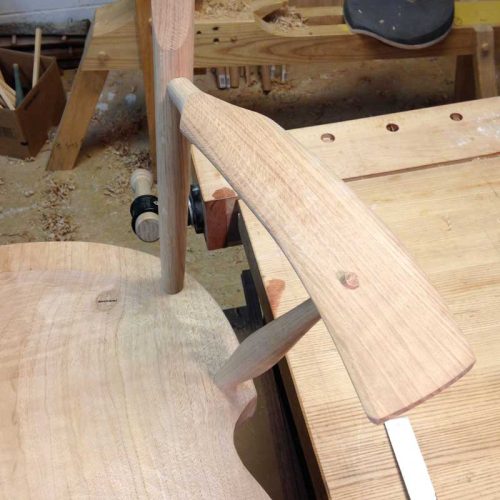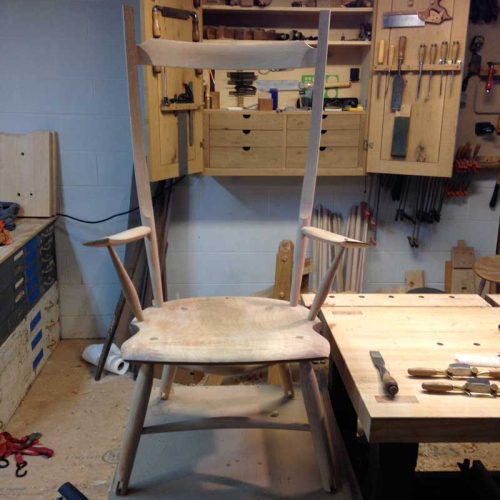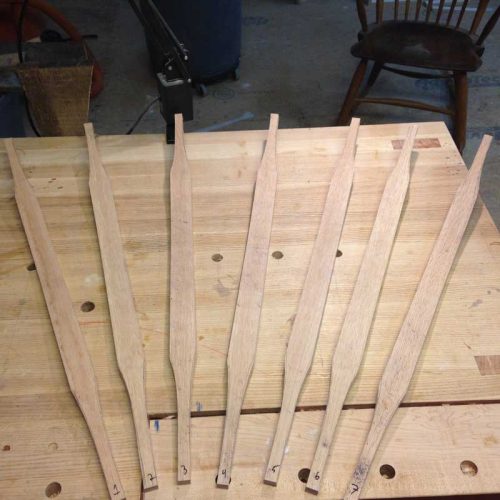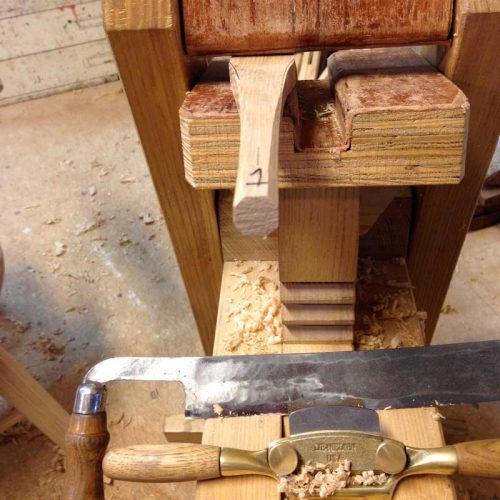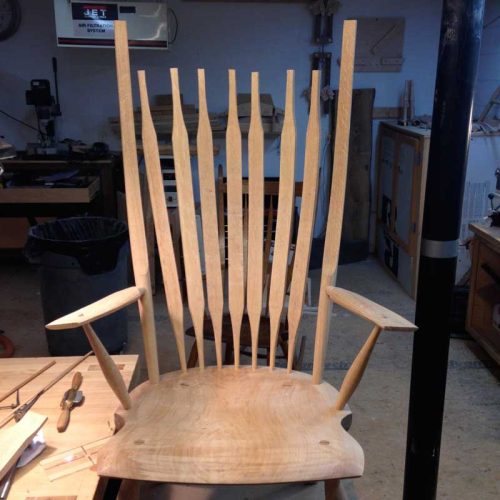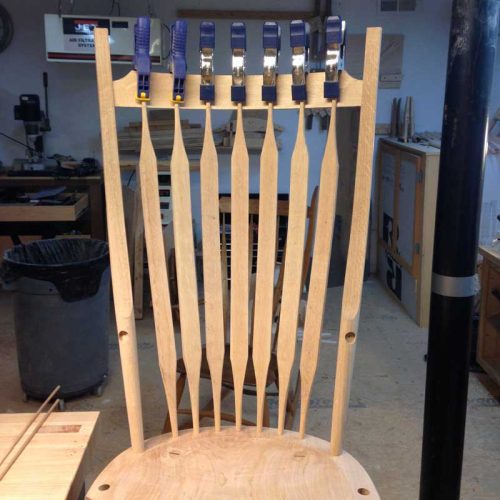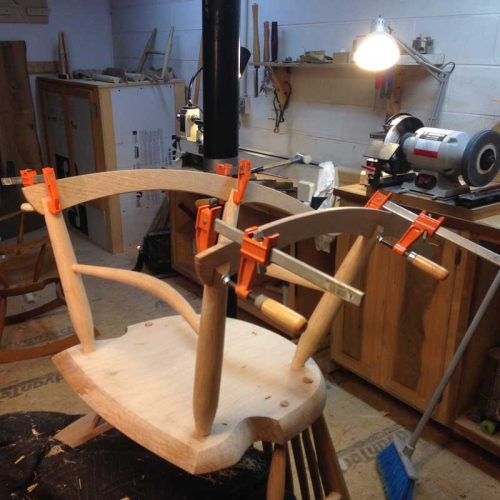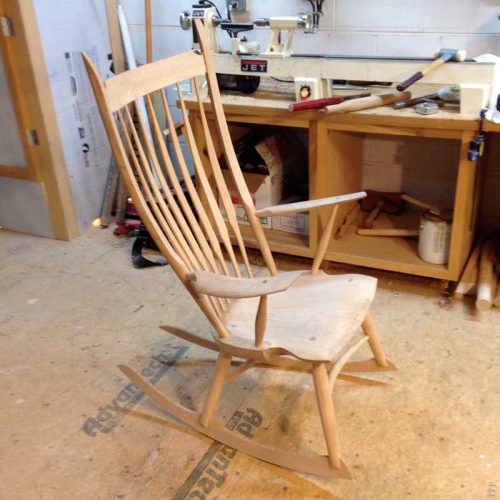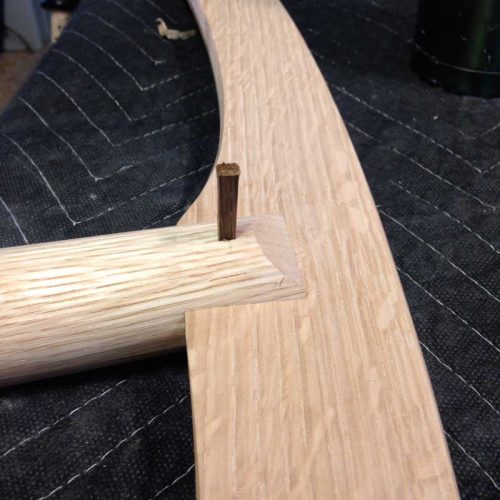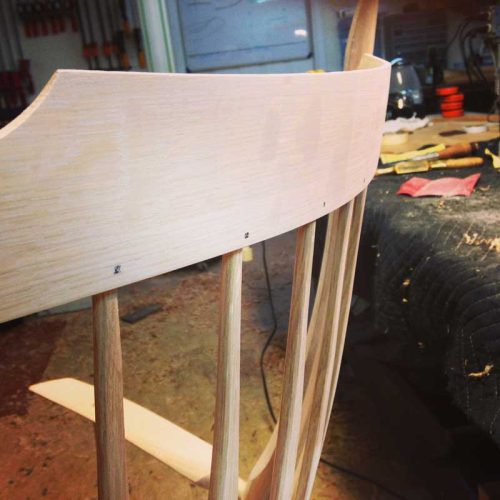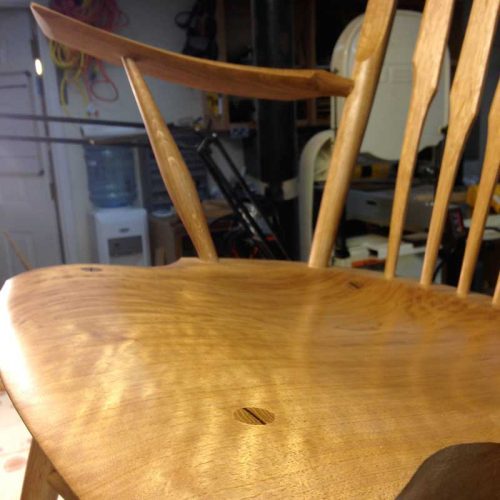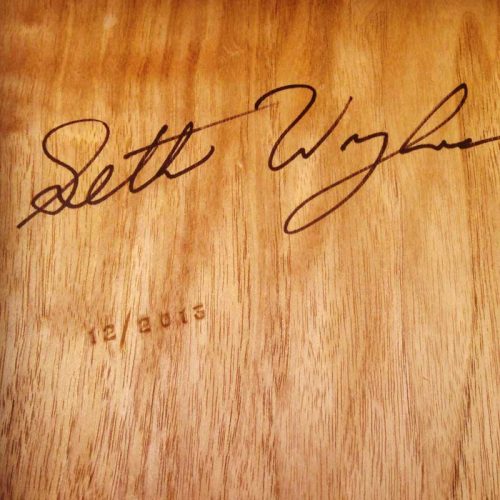My Process
I gravitated towards Windsor chairmaking after my training because I loved how it connected me to my environment. Getting a green log and splitting the parts directly teaches you so much about the properties of wood and how strong and versatile it is. The simplicity of the Windsor form allows for endless variation from turning styles, to adapting the actual geometry of the chair.The term “Windsor” refers to a specific style of furniture. In most forms of chairs the rear leg continues through the seat to create the back support. Whereas with Windsor chairs the keystone is the solid wood seat, from which all other elements are joined directly. Legs, back supports, and arm supports are all joined with a tapered tenon through the wooden seat, and then wedged from the opposite end.
This type of construction allows the chairmaker to use green wood for all parts except for the seat. Many other forms of woodworking require that the wood is seasoned and dried for years before it is ready to be used. Instead Windsor chairmakers split their parts from freshly felled trees, where the wood still has a high moisture content. This allows for the wood to be easily shaped, steamed, bent and dried into curved forms to create the shaped elements of the chair.
Using these traditional methods I am able to work with locally sourced wood, such as white oak, maple, and pine. Splitting the wood with hand tools allows me to follow the natural grain fibers of the wood, ensuring uncompromising strength and flexibility. The forms used in bending the wooden parts are designed to follow the human contour so I am able to create a chair that rivals in comfort your favorite upholstered lounge chair.
I am constantly changing the bends I use to test and improve the ergonomics of my chairs. And my love for the Windsor style of construction has now led to my own unique creations. Below are some examples of the process to give you a taste of the shop.
making a rocking chair
Here is the Fumed Oak rocker going together in steps. In the end the chair will get fumed with ammonia, to age and give a rich brown color to the wood and then finished with five coats of hand rubbed Tung oil.
mouse over the photos to display the slideshow navigation and click to enlarge the images in a lightbox.


